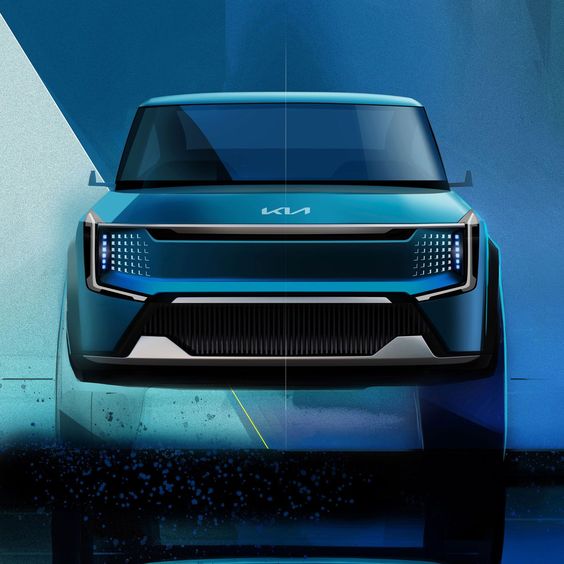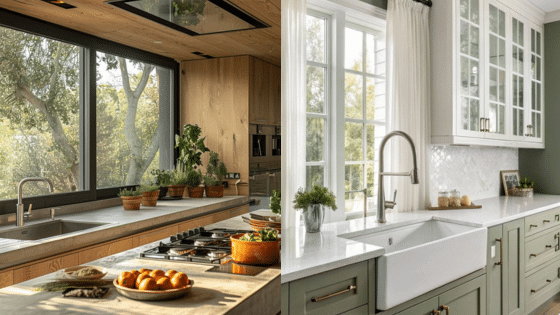The car grille is more than just an opening for air intake; it represents a crucial element of a vehicle’s identity and brand image. From classic designs that evoke nostalgia to modern, sleek structures that signal innovation, grilles have a way of capturing attention. As automakers evolve, so do their approaches to grille design, incorporating aesthetics with functionality.


In today’s market, especially with the rise of electric vehicles, designers face unique challenges. Grilles can now serve new purposes beyond traditional airflow, adapting to an electric vehicle’s cooling needs and contributing to its overall look. This evolution shows how important it is for grilles not only to reflect a brand’s heritage but also to align with future trends in automotive design.


Exploring the now and the future of car grille designs reveals fascinating insights into automotive history and innovation. Readers will discover how these components balance style and function, shaping the identity of the cars they adorn.
Key Takeaways
- Grilles play a key role in defining a car’s identity and brand image.
- Electric vehicles require innovative grille designs for both aesthetics and function.
- The evolution of grille design reflects broader trends in automotive history.
The Essence of Grille Design in Brand Identity


Grille design plays a critical role in shaping a vehicle’s identity. It serves as a functional element and a signature detail that enhances brand recognition and customer loyalty.
The Evolution of Car Grilles
Car grilles have undergone significant transformations since the early 1900s. Initially, grilles were functional, serving to allow airflow to the radiator. As automobile design evolved, grilles became key aesthetic features.
For instance, the kidney-shaped grilles of BMW emerged in the 1930s, establishing an instantly recognizable style. Similarly, Ford’s seven-slot grille on the Jeep reflects ruggedness, appealing to adventurous drivers. Classic models like the Cord 810 introduced luxury into grille design, influencing future generations.
Today’s grilles blend innovative materials and technologies, enhancing both style and aerodynamics. Brands like Audi and Lamborghini continue to redefine grille aesthetics, contributing to a strong brand identity through unique designs.
Iconic Grille Designs and Automaker Signatures
Certain grille designs have become synonymous with their respective brands. The Mustang’s pony logo, combined with its distinctive grille, creates an iconic look that car enthusiasts admire.
Meanwhile, one cannot overlook the triangular grille of the Austin Healey Sprite or the classic allure of the 1967 Mercury Cougar’s grille. Cadillac presents luxury through its bold, elegant grilles, while Rolls-Royce underscores opulence with intricate designs.
Grilles like those found on the Oldsmobile Toronado and Fiat models reflect historical trends and cater to specific market segments. Each design tells a story, allowing brands to communicate their values and aesthetics efficiently.
The Role of Grilles in Electric Vehicles


Electric vehicles (EVs) are reshaping the automotive landscape, leading to a significant evolution in grille design. With features tailored for efficiency and style, the role of grilles has transformed in response to new technology and consumer expectations.
The Shift to Electric and its Influence on Grille Design
As electric powertrains become more prevalent, traditional grilles are experiencing a shift in purpose. Many EVs, like the Tesla Model S and Model X, have adopted a sleek, minimalistic approach, often featuring an “anti-grille” design. This style reduces air intake needs since electric motors generate less heat compared to internal combustion engines.
For instance, the Hummer EV employs bold aesthetics while minimizing the grille’s functional aspects. Automakers are focusing on aerodynamics and efficiency, realizing that a smaller or less pronounced grille can help decrease drag, thus enhancing battery range. The Mustang Mach-E sports a closed front fascia that complements its electric design while still making a statement.
Alternative Functions for Grilles in EVs
In electric vehicles, grilles can serve alternative functions beyond simply cooling engines. They often house critical components like sensors for advanced driver-assistance systems (ADAS).
Models like the Tesla Model 3 and the Alfa Romeo EV versions showcase how grilles can incorporate storage compartments, adding practical space for everyday use. Additionally, some EVs integrate intricate designs within the grille for better airflow management, allowing for necessary cooling of batteries and motors without traditional air intake.
Today’s grilles are also seen as a canvas for automotive brands to express their identity. The evolution of grille design reflects not just technical advancements but also the shift towards more civic-minded and eco-friendly automotive solutions.
Technical Aspects of Grille Design


The design of car grilles plays a crucial role in both functionality and aesthetics. From enhancing aerodynamics to facilitating cooling, how grilles are crafted can greatly impact vehicle performance.
Aerodynamics and Car Grille Design
Aerodynamics is key in car design, influencing fuel efficiency and stability. An effective grille shape allows air to flow smoothly over the vehicle, reducing drag.
When designing a grille, engineers focus on:
- Shape: A streamlined design helps in directing airflow.
- Positioning: Grilles are often placed low to capitalize on natural air currents.
- Materials: Lightweight materials contribute to better aerodynamics.
Modern techniques utilize cutting-edge technology like wind tunnel testing and computer simulations to refine these aspects. Sensors can monitor airflow patterns to optimize ventilation, ensuring that the vehicle maintains aerodynamic integrity as speed increases.
The Functionality Beyond Aesthetics
Grilles serve purposes beyond looks. They are essential for cooling components like the radiator and powertrain. A well-designed grille allows for adequate airflow, preventing engines from overheating.
Key considerations include:
- Cooling: Grilles must be designed to channel air effectively to cooling motors and components.
- Access: They should allow for easy access to sensors and other vital parts.
- Durability: Materials chosen must withstand debris and environmental factors while remaining functional.
The balance between style and functionality is vital. A gorgeous grille that doesn’t perform well can compromise the entire vehicle’s efficiency and safety.
Innovation and Future Trends in Grille Design


Grille design is rapidly evolving, responding to advancements in automotive technology and shifting consumer preferences. New innovations focus on efficiency, aesthetics, and the integration of electric powertrains.
Adapting to New Automotive Technologies


As automakers like GMC and Hyundai embrace cutting-edge technology, car grilles are transforming to accommodate these changes. Traditional cooling needs are diminishing with the rise of electric vehicles (EVs), leading to designs that prioritize aerodynamics.
In models like the Hyundai Kona and Niro, grilles may adopt a more streamlined appearance, reflecting their electric capabilities. Smart features, such as active grilles that open or close based on cooling requirements, offer both efficiency and style.
Additionally, advancements in materials—like lightweight composites—make it possible to create intricate grille designs without compromising performance. These smart adaptations in grille design respond to the evolving landscape of mobility products.
Predicting the Next Iconic Grille
Eric Noble from Car Lab Automotive Consultancy suggests that future grilles will prioritize distinct visual identities for brands. As legacy automakers reinvent their models, unique cut-outs or digital displays may become popular.
Expect to see grilles that integrate LED technology for enhanced visibility and aesthetic appeal. These changes promote brand recognition while embracing sustainability.
Ultimately, iconic grille designs will likely merge artistic expression with technological function. The shift towards efficiency will drive the creation of grilles that reflect both modern styling and innovative engineering, setting the stage for the next generation of automotive design.
Grilles as a Reflection of Automotive History


Car grilles have always been more than just functional elements. They serve as a canvas showcasing a brand’s identity and heritage. For instance, Buick’s distinctive grilles highlight sophistication and bold design.
In the early days of automotive design, grilles were primarily utilitarian, focused on cooling engines. As time went on, chrome accents became prevalent, adding a touch of luxury. This shift reflected the growing importance of aesthetics in vehicle design.


Legacy automakers often used their grilles to convey messages about their brand. For instance, Cadillac adopted a more elaborate style to symbolize luxury, whereas Ford opted for a simpler, more accessible look.
Here are a few examples of iconic grilles and what they represent:
| Brand | Grille Style | Reflection |
|---|---|---|
| Buick | Bold, vertical lines | Elegance and performance |
| Cadillac | Large, intricate designs | Luxury and status |
| Ford | Horizontal slats | Reliability and practicality |
The evolution of grilles showcases the changing tastes and values of society. They mirror the transition from purely functional designs to symbols of style and brand legacy.
Designing Grilles for Both Style and Function


Designing car grilles involves a careful balance between aesthetics and practicality. While a stylish grille can define a vehicle’s character, it must also serve essential functions to ensure optimal performance.
The Interplay between Form and Utility
Car grilles aren’t just for looks. They play a critical role in engine cooling and airflow. A well-designed grille allows sufficient air intake, which is vital for regulating engine temperature.
If the grille is too restrictive, it can lead to overheating, impacting performance. Designers often utilize materials and shapes that enhance airflow without compromising style. This balance of form and function helps create a distinctive look while ensuring the vehicle operates efficiently.
Creative Freedom vs. Manufacturing Constraints


While creativity is essential, automotive designers face numerous manufacturing constraints. Materials must be lightweight yet durable, which impacts the design process.
For instance, metals might allow for intricate designs but can be heavier compared to plastics. Additionally, mass production techniques and tooling limitations can restrict complex shapes. Designers must navigate these challenges while pushing the envelope to create iconic, stylish grilles that stand out on the road.
- 323shares
- Facebook0
- Pinterest323
- Twitter0
- Reddit0












